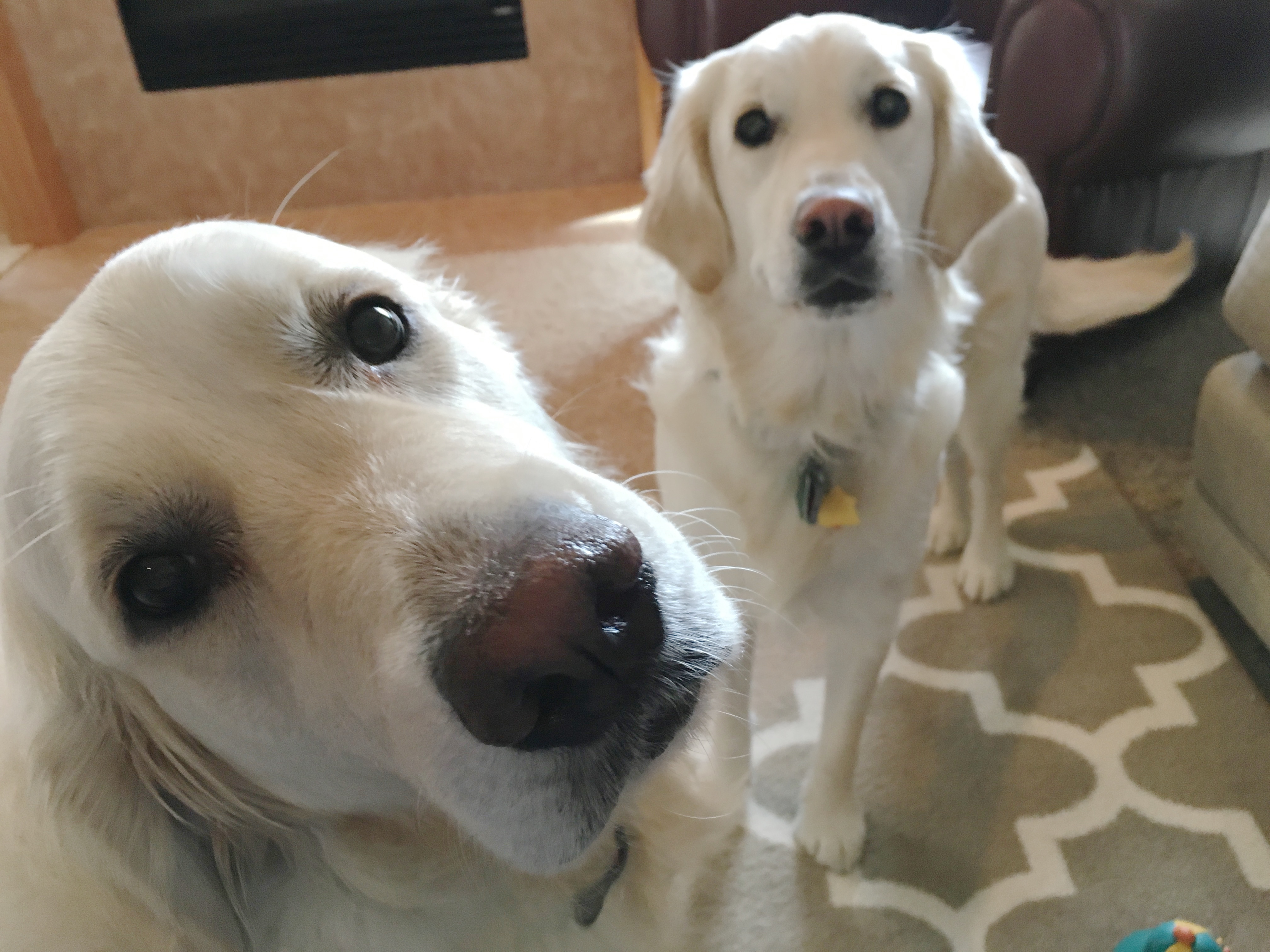Adding Structure Helps a Pair of English Cream Retrievers Learn to Behave Better
By: David Codr
Published Date: March 27, 2016
Elsa (left) is a two-year-old English Creme Retriever in Omaha who pulls on the leash, digs in the yard, eats mulch and doesnt recall on command. Her room mate Lucy is a one-year-old English Creme Retreiver who also pulls on the leash, digs and eats mulch, but her primary issues is she is nervous.
Both dogs were clearly excited when I arrived for the session, although Lucy stayed in the background and didn’t really do much barking until after she gave me a sniff.
Lucy’s barking isn’t something I would normally take much notice of, however I did spot something that happened in conjunction with her barking that gave me a clue as to perhaps why she was a nervous dog.
When a human sees another human in distress or having difficulty, it’s natural for us to try to calm or soothe them by interacting and reassuring them. You see mothers scoop up their child after it falls and give them all kinds of loving attention to try to make it all better. This is human psychology and it works well for us
But when a dog is in an unbalanced state of mind and we provide it with attention or affection, we are essentially agreeing with whatever state of mind the dog happens to be in.
This is a prime example of how dog psychology differs from that of humans. Because Luce’s guardians petted her each time that she got insecure, they were inadvertently reinforcing the exact behavior they were trying to eliminate.
Not only will Petting with a Purpose help the humans stop reinforcing unbalanced behavior in Lucy, they will also teach her that she is rewarded for engaging in desired behaviors like coming, sitting or laying down.
If all of the members of Lucy’s family start Petting with a Purpose, it will go a long ways towards helping both dogs with their issues; Elsa’s pushiness and Lucy’s lower self esteem.
Another great way to help both dogs behave better will be to incorporate clear rules, boundaries and limits. Insecure dogs feel much better when they know exactly where the lines are drawn. And for dogs who are a little bit on the pushy side like Elsa, humans claiming and defending their personal space while adding rules and structure can help her learn to be more respectful and adopt more of a follower mindset.
I went over a set of escalating consequences that I recommend guardians use to disagree with their dogs whenever they engage in unwanted actions or behaviors. I also wanted to show them how they can utilize positive reinforcement to get the dogs to compete with each other to be more obedient. A great example of this is the recall exercise.
Now that we had added structure and discipline to the dog’s daily routine, I wanted to repeat the door answering exercise and show the guardians how they can use what they learned to claim the area around the front door before opening it.
The family’s father stepped outside to play the part of an arriving just so that I could demonstrate the technique for the mother. After this practice session, the father stepped outside again so that we could repeat the exercise, but this time with the family’s mother on door duty.
It was great to see how quickly the dogs adapted to the new door answering ritual. Because of Lucy’s lower self-esteem, she pretty much took herself out of the equation with minimal correction needed. Elsa is certainly the more pushy of the two dogs and will probably test the resolve of her guardians by attempting to cross the boundary under various circumstances. If the guardians are consistent with their corrections, Elsa and Lucy will both learn to leave the door answering to their humans.
By the end of the session I could notice a change in both dogs personalities. Elsa was not being as pushy or assertive and seemed to be recalling much better. Lucy seemed a little bit more confident and at ease rather than being so anxious and nervous.
As the dogs get used to deferring to the human’s authority, many of their nuisance behaviors should subside on their own. For those that remain, now their guardians have the tools and techniques needed to put them to a stop permanently.
Categorized in: Dog Behavior


